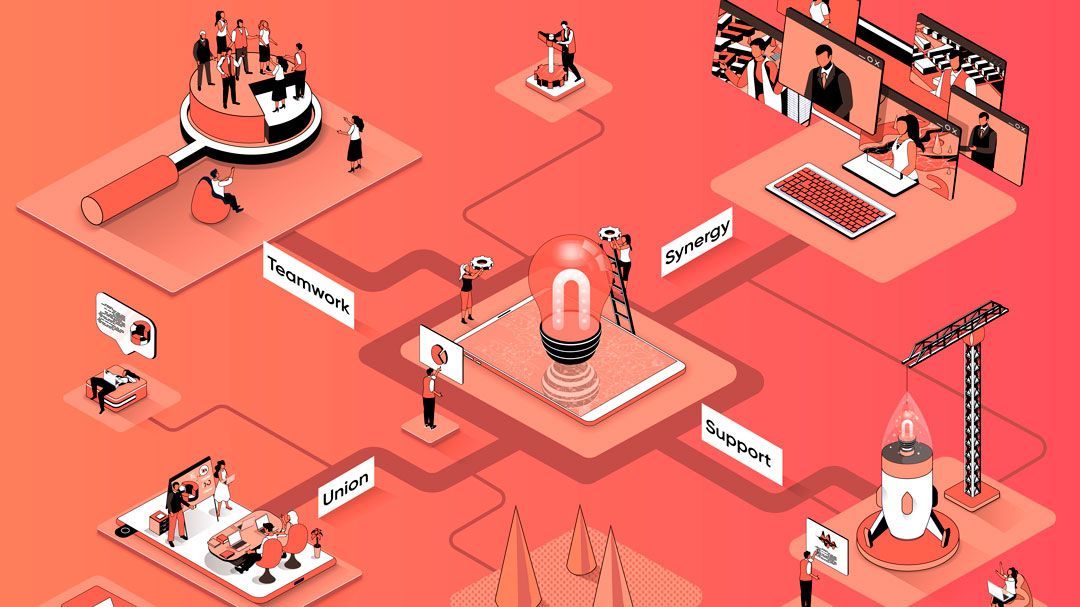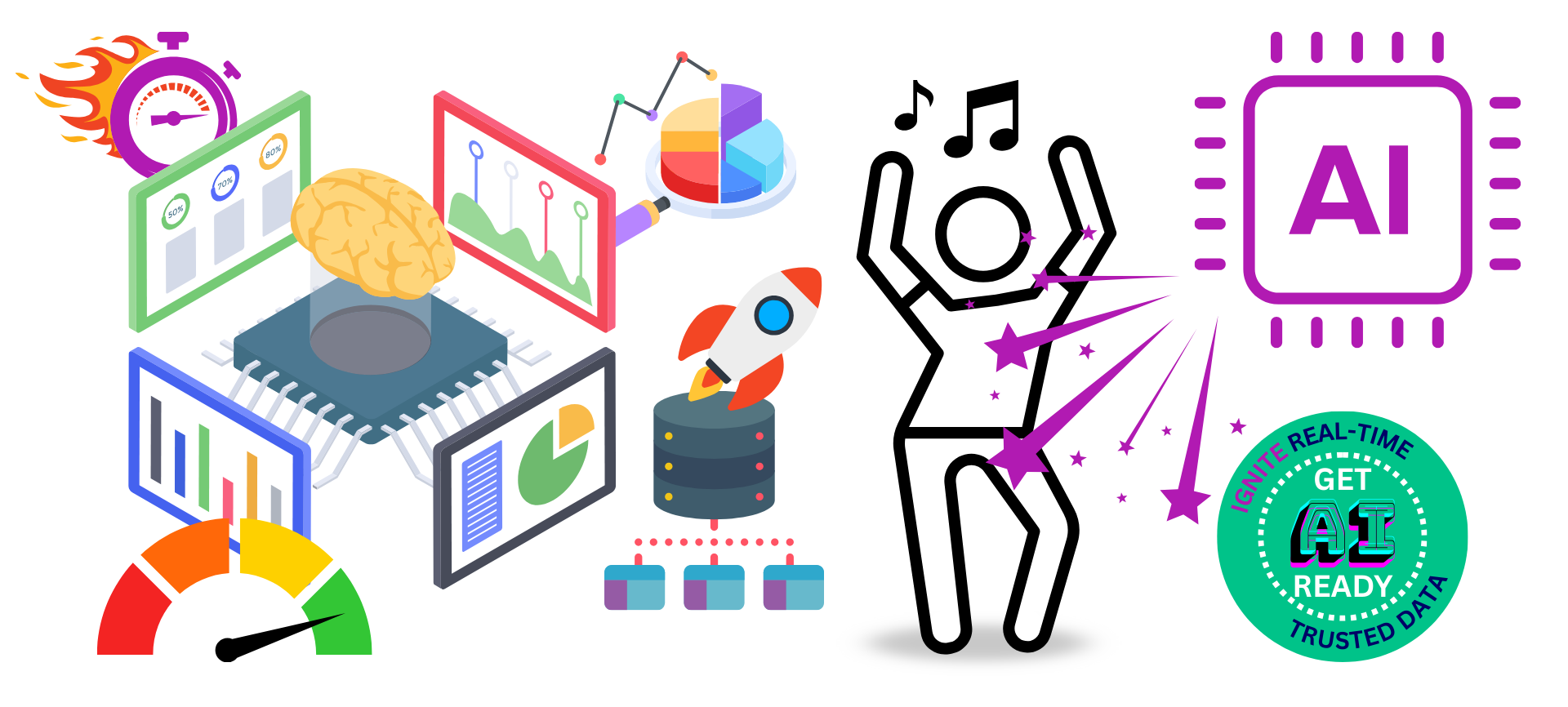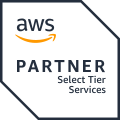How CEOs can significantly reduce their time-to-decisions

CEOs have always faced a unique set of challenges
The current environment of perpetual transformation (of both business and markets) is placing significantly more pressure on shortening the time to make a decision.
Navigating the pressures of driving growth, reducing real expenses, and maintaining a strong company culture—all while staying ahead in an increasingly competitive market—are just some of the concerns keeping CEOs up at night.
"Balancing these priorities often requires asking through questions about the business."
Are we delivering value to our customers? Are we operating efficiently? Are we leveraging our strengths to maintain a competitive edge? And critically, are we using the right insights to make informed decisions that will shape the future of our organisation?
If you're a business leader, you're probably asking yourself questions like these about your company:
- How do we keep our customers coming back, and what can we do better to stop them from leaving us for our competitors?
- Where in our business are we slow to react to changes, and how can we become more agile and responsive?
- What numbers really matter when we're checking if our business is doing well? Are these helping us reach our long-term goals?
- What risks could disrupt our business, and how are we identifying and managing them?
- What makes us stand out from our competitors, and how do we ensure we maintain that edge?
- How do we make sure everyone in the business is aligned with the same priorities and working towards shared goals?
But what if we reframed these questions with a lens of "what data would we need?" Then our questions might look more like this:
How do we know if our customers are happy and loyal? What data can help us spot early signs of churn and understand what keeps them coming back?
- Where in our business are we slow to respond to changes, and what data could help us identify bottlenecks or opportunities to improve agility?
- What numbers or trends show whether the business is on track? Are we using the right systems and tools to ensure these metrics align with our long-term goals?
- What risks are lurking in our business, and how can we use data insights to predict, monitor, and mitigate them effectively?
- What does our data tell us about what makes us stand out from competitors, and how can insights strengthen that competitive advantage?
- How do we ensure everyone in the business is working toward the same priorities? Are we using shared dashboards or reports to keep everyone aligned?
Some of this data may already exist in your business today, but some of it likely doesn’t—or isn’t accessible in a meaningful way yet. The good news is that you don’t need all the answers or perfect systems upfront.
"You can start small by focusing on what's available now and building incrementally from there."
A practical first step is implementing "spot solutions" around visualisation and improving access to key system data across both in-house systems and SaaS platforms. By taking the data you already have and applying effective data handling techniques, you can create dashboards or reports that provide immediate insights into key areas of your business. These solutions not only help uncover gaps in your data but also enable opportunities for process improvement and automation—helping you drive efficiency while delivering value.
From there, you can adopt an incremental approach to improve the flow of data feeding into these visualisations. This might involve setting up a cloud-based data warehouse to centralise your data from multiple sources across your organisation. Such platforms allow you to create a single source of truth for your business while extending the life of legacy systems by enabling access to critical information without requiring immediate replacement. This approach helps de-risk system transitions while unlocking early ROI through improved processes.
At Sida4, we're a right-sized partner with demonstrable experience in helping businesses unlock the power of their data through practical and pragmatic approaches.
"We focus on delivering quick wins upfront."
Cost-effective streaming everywhere, no matter the environment
Solutions that deliver tangible business value quickly while building momentum for further improvements are our first priority. Our approach helps extend the life of existing assets while de-risking their eventual replacement by ensuring early benefits are realised through process improvement, automation, and actionable insights that drive better decision-making across the value chain.
So, what kind of difference could this approach make for most businesses? Consider these possibilities:
- How much faster could we respond to market changes if real-time access to key system data was at our fingertips?
- What if we could predict customer churn before it happens and take proactive steps to retain valuable clients using actionable insights?
- How would decision-making improve if we could see the impact of strategies as they unfold through interactive dashboards tied directly to operational data?
- What efficiencies could be unlocked if we had a clear view of operations across the entire value chain—from supply chain management to customer service—all centralised in one accessible platform?
- How much more competitive could we become by identifying new opportunities faster than others in the market using better access to integrated data sources?
- What would it mean for our culture if everyone in the organisation had access to clear metrics that aligned with shared goals—creating transparency and alignment across teams?
The potential impact is significant—better decisions made faster, greater agility in responding to challenges, improved customer retention, operational efficiencies unlocked, and new opportunities identified before competitors even notice them.
By starting small with focused solutions and building incrementally, any business can begin harnessing its data as a powerful driver of success while extending the life of existing systems, de-risking transitions, and delivering early ROI that fuels further growth across the value chain.
Igniting Your Business Data: From Insights to Impact
At Sida4, we understand that real businesses need real solutions.
"Our vision isn't about implementing technology for technology's sake."
It's about igniting the data within your organisation to drive tangible improvements and answer the critical questions that keep you competitive.
The Challenge: Data Rich, Insight Poor
Many businesses today are drowning in data but starving for insights. You have systems generating information constantly, but when it comes to answering crucial questions like "Why are our best customers leaving?" or "Where are our biggest operational inefficiencies?", the answers remain frustratingly out of reach.
Our Vision: Igniting Your Data
We believe in "igniting" the data in your business. This means transforming raw information into a dynamic, accessible resource that provides the right insights, to the right people, at the right time. Here's how we bring this vision to life:
- Start with the Questions That Matter
Begin by identifying the key questions driving your business. What keeps you up at night? What opportunities are you potentially missing? These questions become our north star. - Visualise for Immediate Impact (Power BI)
We rapidly deploy dashboards and reports that bring your existing data to life. This isn't about fancy graphics—it's about surfacing actionable insights that can drive immediate decisions and prove the value of data-driven approaches. - Unify and Streamline (Snowflake)
As your appetite for insights grows, we help consolidate your data sources into a unified, scalable warehouse. This breaks down silos, improves data quality, and sets the stage for more sophisticated analytics. - Accelerate to Real-Time (Confluent.io)
For businesses ready to leap ahead, we implement real-time data streaming. This turns your organisation into a responsive, agile entity capable of reacting to changes as they happen.
Real Impact for Real Businesses
This isn't a theoretical exercise. We've seen firsthand how this approach transforms organisations:
- A retailer reduced inventory costs by 15% by gaining real-time visibility into stock levels and consumer demand patterns.
- A services company improved customer retention by 22% through early identification of at-risk accounts and personalised intervention strategies.
- A manufacturer cut downtime by 30% by streaming IoT sensor data for predictive maintenance.
Your Journey to Data-Driven Success
- Quick Wins: We start by tackling a pressing business question with existing data, proving value fast.
- Build Momentum: As confidence grows, we expand the scope, bringing in more data sources and tackling more complex challenges.
- Transform the Business: Eventually, data becomes woven into the fabric of your decision-making, driving continuous improvement and innovation.
Why This Approach Works
- Pragmatic: We meet you where you are, using your existing systems and data to deliver value quickly.
- Scalable: Our solutions grow with you, from basic reporting to advanced predictive analytics.
- Business-Focused: Technology serves your goals, not the other way around.
Ignite Your Data Today
Every business has untapped potential locked away in its data. Our mission is to help you unlock that potential, turning information into insight, and insight into action. Whether you're looking to optimise operations, enhance customer experiences, or identify new market opportunities, the answers likely already exist within your organisation.
"Let's ignite your data and illuminate the path to your business goals."
With 4impact as your partner, you'll have the insights you need, when you need them, to drive real improvements and stay ahead in today's competitive landscape.
ROI Through Pragmatic Innovation: From Capex to Opex
For many businesses, the biggest barrier to becoming data-driven is the perceived need for massive upfront investment. At 4impact, we’ve proven repeatedly that this doesn’t have to be the case. By focusing on incremental improvements and leveraging modern architectures, businesses can transition from capital-intensive transformations to operational efficiency gains that fund ongoing innovation.
1. Sweating Assets, Extending Value
Legacy systems don’t need to be replaced overnight. By integrating them into modern architectures, you can:
- Extend asset life by 3-5 years through event streaming and API abstraction layers.
- Avoid costly migrations while still accessing critical data.
- Example: A financial institution avoided $2M in core banking system replacement costs by streaming transaction data from its 20-year-old mainframe into Snowflake for real-time fraud analysis.
2. Event-Driven Architecture: Reducing Technical Debt
Traditional API-driven architectures create brittle point-to-point integrations that become maintenance nightmares. Event-driven approaches with Confluent.io future-proof your business by:
- Eliminating 70%+ of integration code through centralised event streaming.
- Reducing integration costs by 40-60% compared to API sprawl.
- Case Study: A retailer cut integration costs by 55% by replacing 200+ custom APIs with a Kafka event bus, while accelerating new feature deployment by 6x.
3. Streamlining Data Pipelines
Modern platforms like Snowflake and Confluent Tableflow collapse traditional ETL complexity:
- Shift-left savings: Tableflow’s no-code pipelines reduced one client’s data engineering costs by 60% by enabling analysts to build transformations directly in Snowflake.
- Cost per insight: Centralised warehouses cut redundant data storage costs by 30-50% while improving accessibility.
- Example: A logistics company saved $480k/year by consolidating 15 fragmented data lakes into Snowflake, with Tableflow automating 80% of pipeline updates.
4. From Capex to Opex
When you combine these approaches, the financial model shifts:
| Traditional CAPEX Approach | Sida4's OPEX 'Quick wins' Model |
|---|---|
| $1M+ upfront system replacements | Start with $50k Power BI dashboards |
| 12-18 month ROI timelines | 90-day quick wins fund next phase |
| High risk of overruns | Iterative scaling reduces risk |
| Locked into legacy vendors | Cloud-native flexibility |
Real-world outcome: A manufacturing client funded their entire 3-year data modernisation program through operational savings alone:
- Year 1: $220k saved via Power BI-driven inventory optimisation
- Year 2: $1.2M saved through Snowflake-powered supply chain analytics
- Year 3: $3M+ annualised savings from real-time IoT streaming
The Compounding ROI Advantage
- Faster time-to-value: First insights delivered in weeks, not quarters.
- Self-funding model: Early efficiency gains bankroll future improvements.
- Future-proofing: Event-driven architectures adapt to change 80% faster than API-based systems.
By focusing on practical, incremental steps—sweating assets, eliminating technical debt, and leveraging modern data platforms—we help businesses transform their data capabilities without massive upfront investments.
The result? A shift from risky, capital-intensive projects to a sustainable operating model where data improvements fund themselves through measurable business impact. Let’s talk.

Chris Eldridge, CEO
Sida4 and 4impact
Publishing note: This article was originally published under the 4impact brand and is now represented by Sida4, their data enablement and integration focused sister company.
insights















